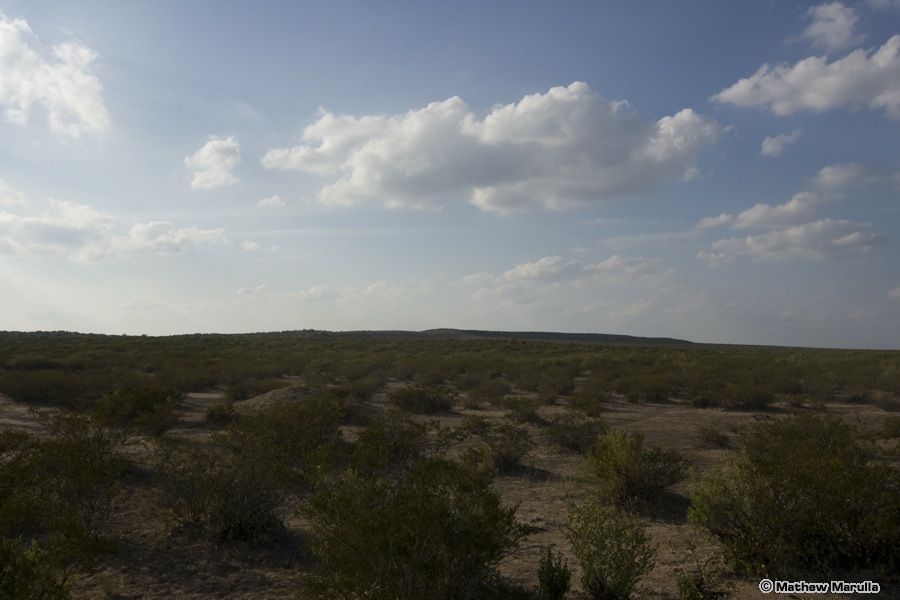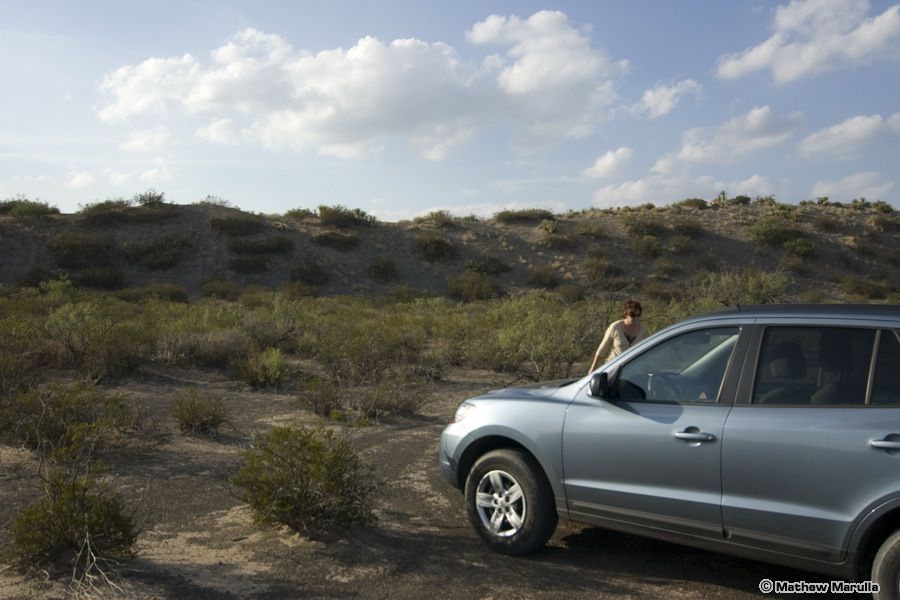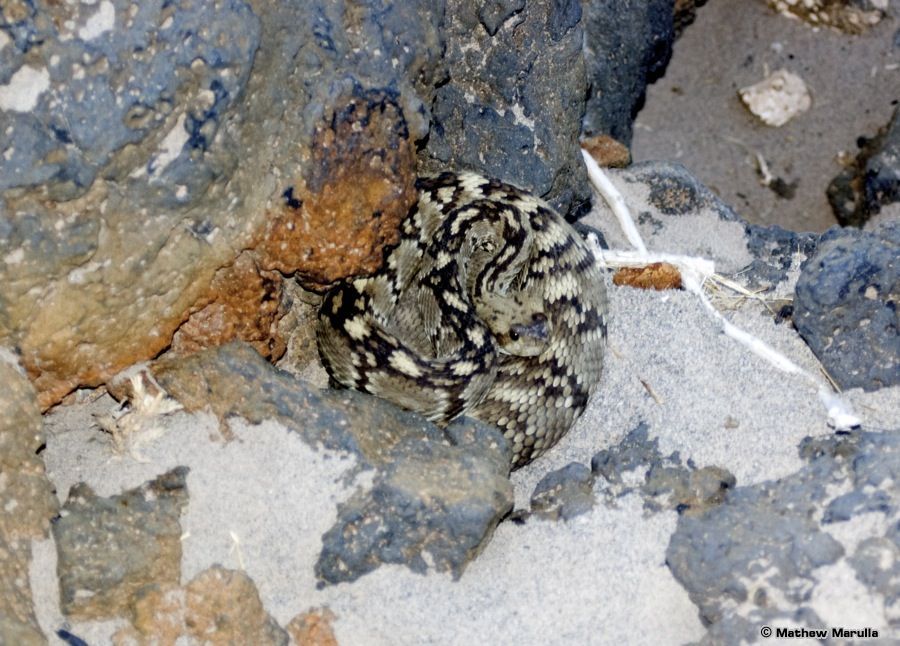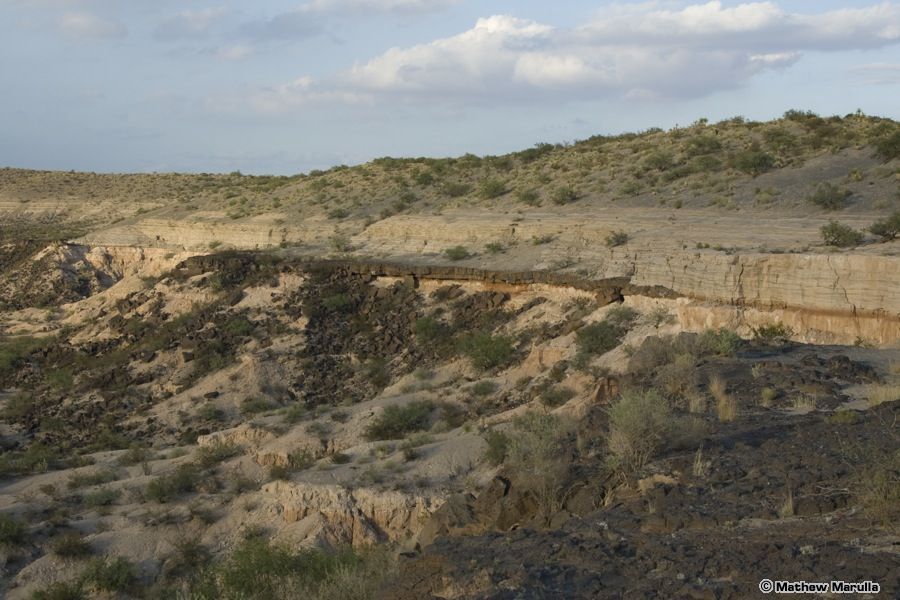We were in New Mexico for other reasons, but managed to visit two sites while here – both in extreme southern New Mexico, near where we were staying in Las Cruces.
September 18th
Kilibourne Hole is a “Maar” – a volcanic feature where subterranean magma came into contact with ground water near the surface. The latter flashed to steam, blowing out a hole about a mile in diameter but less than a hundred feet deep. It is located about 8 miles from the Mexican border in a very empty part of New Mexico.

Kilibourne Hole Peridot
From a couple miles away you can see the edge of the Maar as a slight broad rise on the horizon. In the interior of the hole, there is a distinct layer of volcanic basalt. Under this layer, and weathered-out elsewhere, there are volcanic “bombs” that contain little specks of gem quality Olivine, otherwise known as Peridot.

Kilibourne Hole from a Distance
Here is a closer look at the wall from the outside. It is only about 20 feet tall and easy to walk up.

Wall of Kilibourne Hole
Here is the view into the hole from the top of the edge wall.

Interior of Kilibourne Hole
If you travel here, be very wary of rattlesnakes. We came across five rattlers in the space of about 10 minutes. Just make sure you make a lot of noise on the rocks so they either go away, or rattle so that you have a good shot at spotting one before stepping on it!

Blacktail Rattlesnake
Here you can clearly see the basalt layer. The bombs are found in the dirt beneath this layer, but it takes quite a bit of digging. We found a couple that had weathered out and fallen further down the slope and that was good enough for this trip as it was getting pretty late in the afternoon.

Basalt Layer
September 20th
The area south of Deming, New Mexico is filled with sites for geodes, including a state park dedicated to rockhounding. We spoke to a couple mineral shops in the area and finally settled on checking out a couple sites on the south edge of the Little Florida Mountains.

This is the general area. There was no obvious prospect hole or other diggings, so we just wandered the area and checked out the rocks. We found several pieces of Agate and one good Quartz & Agate Geode.

Geode Site
This is the view south from where we parked. There is supposed to be at least three dig sites here, so a more thorough search of the area is probably a good idea for a future trip.

View to the South
Hi, nice site. Just wanted to add that the pictured snake identified as a western diamondback rattlesnake (Crotalus atrox) (in your Kilbourne Hole account) is actually a northern blacktail rattlesnake (Crotalus molossus). Very different animals in disposition and appearance (blacktails are nicer!).
Cheers,
Jimi
Thanks! Rattlesnake id has been updated.